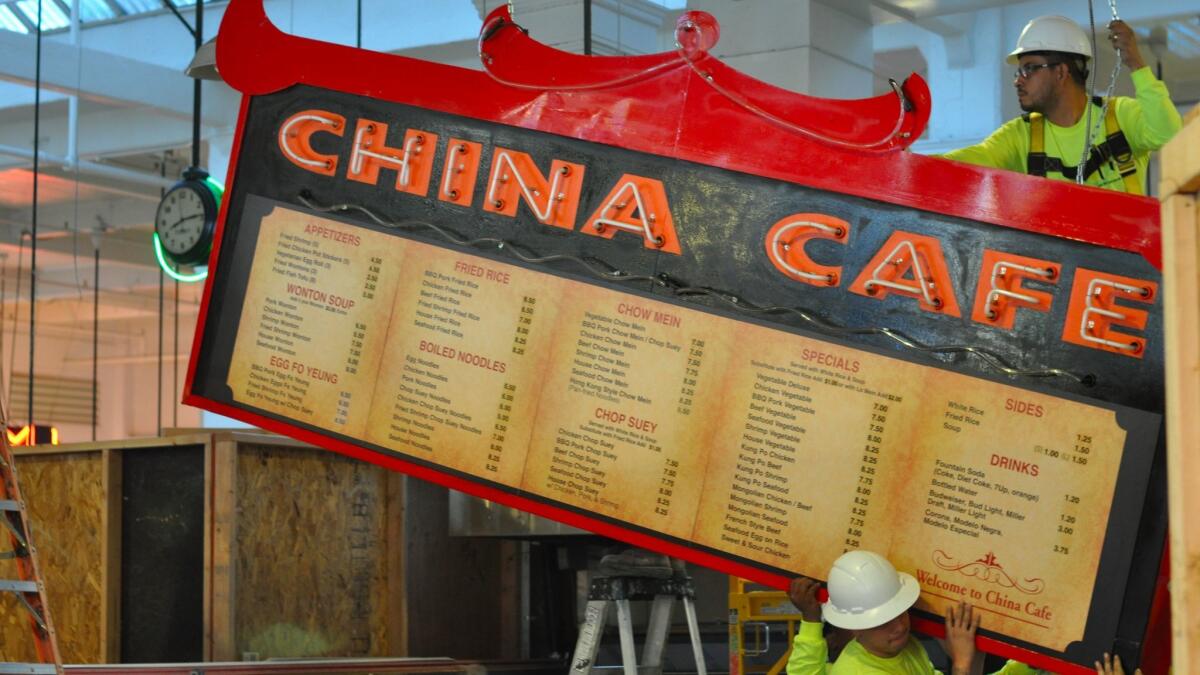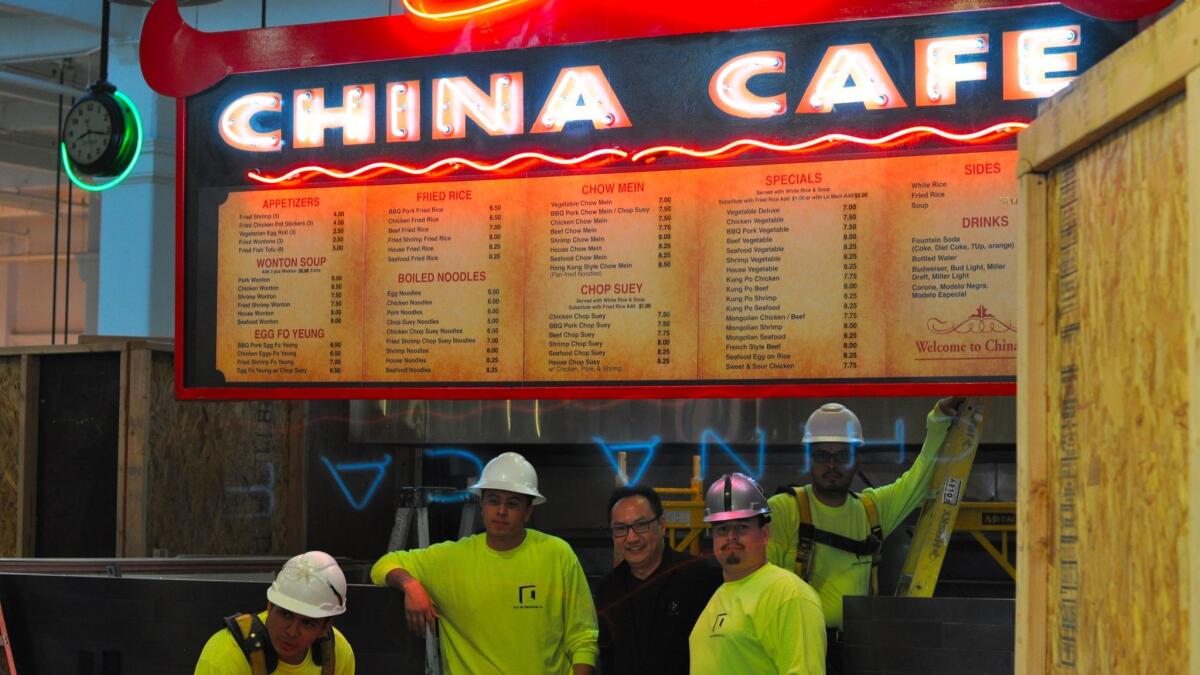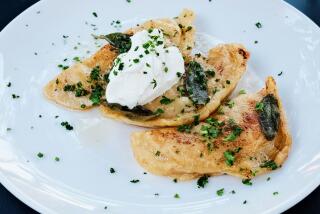Grand Central Market favorite China Café (the won ton soup place) gets an upgrade

Since he was about 8 years old, Victor Salgado has been going to Grand Central Market almost every week. Thirty years ago, his mother would take him to downtown Los Angeles from their home in Hollywood to go shopping for vegetables at the market, where the prices were low and the produce was fresh. A live mariachi band would play every weekend, the floor was strewn with sawdust, and there were dozens of food stalls to pick from for lunch. Salgado would only eat at one of the marketâs many restaurants, China CafĂ©.
These days, he makes the 70-mile trek from Palmdale with his wife and 1-year-old daughter, usually on a Sunday. They meet up with Salgadoâs parents and his sister and sometimes his 18-year-old son. After hunting around for four empty metal tables to push together, they sit as a family for a couple of hours, eating seafood noodle soup, fried rice with shrimp, won ton soup and fried dumplings.
While nearly everything else has changed over the course of the last three decades, the same servers and cooks are still working at China CafĂ© as when Salgado, 38, was a kid. âI guess thatâs the beauty of it. Itâs still the same, and the same food,â he said.
But four years after Grand Central Market was reborn as a foodie destination, China CafĂ© is now changing too. The restaurantâs many loyal customers â the swing-shift workers, the construction guys, the Deloitte accountants, the City Hall and court house employees â have had to eat elsewhere since late November when China CafĂ© closed for the first time in 40 years for an extensive remodel. It will reopen in April.
Rinco and Susie Leung are a change in their own right: Theyâve only operated China CafĂ© for four of its nearly 60 years in business. The couple bought the restaurant from Yi Woon Leung and Munhan Wong, relatives of Susieâs, who had run the restaurant since 1998, when they purchased it from Tam Yu Hay. But when Rinco Leung describes the changes they have made, itâs clear he appreciates that a degree stasis is part of what makes the restaurant an institution. After all, when server Martha Luna, who has worked at China CafĂ© since 1980, was asked to describe how the restaurant has changed over the decades, she said that they got a new sign once.

âI keep the old style,â Leung explained on a rainy day in January as he sat at one of the metal tables that the Salgado family knows so well, in front of the boarded-up restaurant. âI donât want some customers saying, âOh, China Cafe is changing.ââ
There havenât been many changes to the menu: The wontons have been reworked, as has the recipe for the chicken stock thatâs used throughout the menu. For a while, Leung tried selling Tsingtao, that mainstay beverage of Chinese restaurants â but no one ordered it. After four months, he stopped carrying it, sticking instead with what customers have always drank at China Cafe: Mexican beer.
Next to where Leung was seated, behind the temporary wall, a familiar layout was taking shape: A new kitchen and a slightly longer bar, which will be finished with a countertop the color as the old red Formica and lined with the same style of black swivel stools. The restaurantâs classic neon sign and menu board were taken down and refurbished with new tubes and a fresh coat of paint. A photo on Leungâs phone showed the bright colors of the restored sign. It still looks old-style too, but unmarred by decades of hanging in the market hall, which marks its 100th anniversary this year.
But while Leung may be all about the old style at the restaurant, when itâs time for a beer at the end of the day, you wonât find him drinking Modelo Negra at China CafĂ©âs red counter. He prefers the craft beers from the neighboring stall, Golden Road Brewery.
The closure of businesses like the small farmacia that preceded Golden Road has made the market into something of a symbol for gentrification in downtown Los Angeles. But even if there are new customers eating vegan ramen or smoked-fish bagels, families like the Salgados are still dining in the market hall too. Kyle Glanville, co-owner of G&B Coffee, called the clientele he sees sitting at the tables between his coffee bar and China CafĂ© âa perfect snapshot of this part of L.A. in the year 2017.â
Salgado said he was a little disappointed when the market started to change. âI guess I was used to that old style that it had,â he said. It used to feel like home. Now, the straw-scattered floor and mariachi bands have given way to grass-fed beef burgers and the endless line for Egg Slut sandwiches.
But Salgado appreciates the new Grand Central Market too. âIt doesnât matter what color, what culture you are â you see all type of people in there,â he said. âI think thatâs real nice, you know?â
ALSO:
Itâs Taco Tuesday. Here are 11 recipes to help you celebrate
How to make the killer cheeseburger from Curtis Stone and the Nomad food truck
More to Read
Eat your way across L.A.
Get our weekly Tasting Notes newsletter for reviews, news and more.
You may occasionally receive promotional content from the Los Angeles Times.










